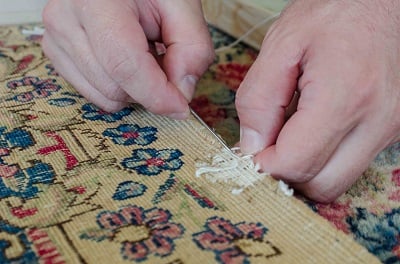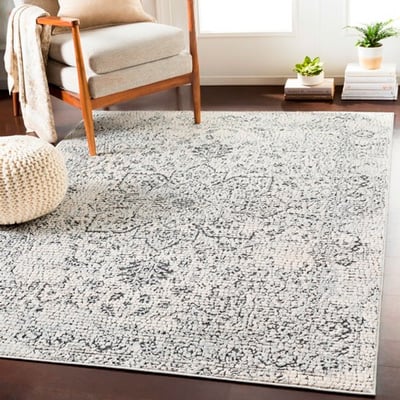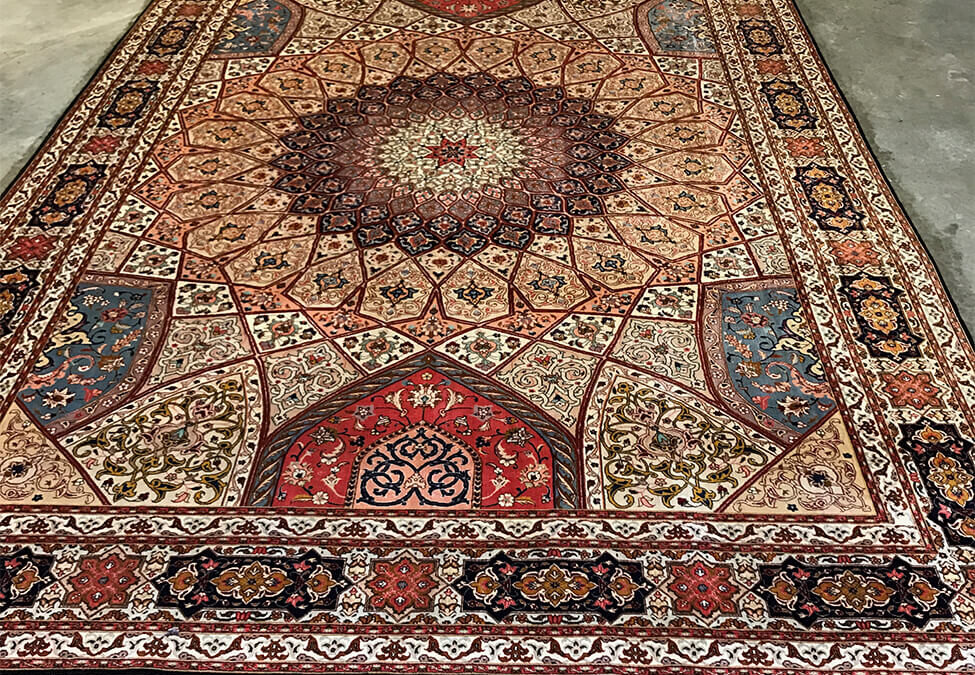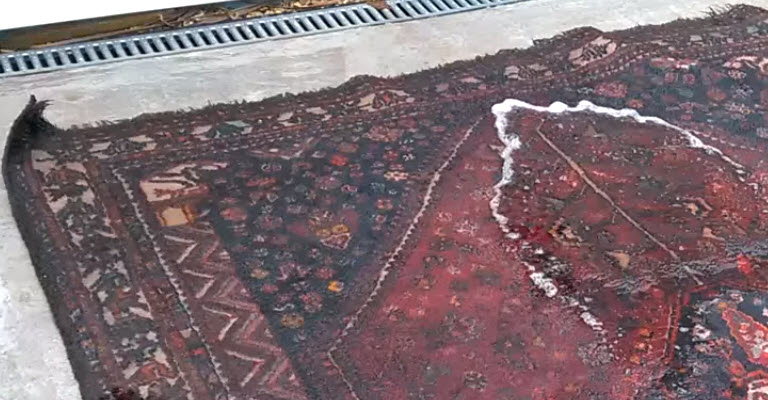Is your rug damaged? Don’t despair. Whether it’s an intricate silk rug or a simple polyester one, you can probably get your rug back in pristine condition.
However, rug repair usually isn’t something you can do on your own. This is especially true if you have an Oriental rug or similarly delicate type. Taking your rug to an experienced rug repair expert is generally the wisest option if you want to keep your rug in optimum condition for future generations.
Before deciding to take your rug to a professional, you’ll probably want to know more about the process and whether or not it’s really necessary. Here’s everything you need to know about rug repair.
Does my Rug Need Maintenance?
The short answer is that if you see any sort of wear and tear on your rug, you should get it fixed now.
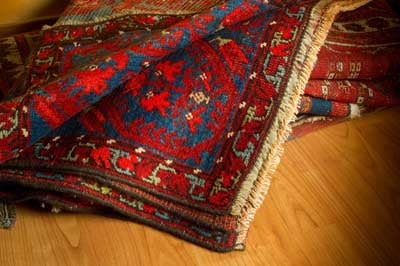
You may have heard the phrase “a stitch in time saves nine,” and the rule definitely applies here. Repairing extensive damage may require changing the pattern of the rug or taking out part of the design. If you want your rug to continue to look the way it originally did, it’s best to get it repaired soon before it reaches a point of no return.
Regardless of the type of damage, waiting will only make the problem progress further over time and become more expensive to fix.
What Kinds of Rug Damage Can Be Repaired?
One of the most common areas of wear is the fringe. Since fringes are delicate and exposed, it’s easy for them to become damaged. You’ll want to fix any loose fringes or sides quickly to ensure the surrounding section of the rug doesn’t unravel.
Luckily, fringe repairs are generally a lot easier and less expensive than repairs to the main pile. These may involve serging the fringe into the side of the rug or adding replacement fringe. For a particularly fine antique rug, we might pull out part of the pile and wrap stitch around every thread of the warp to make it look like the original rug.
Tears are also less difficult to repair. This can change if you don’t get the tear fixed quickly, however. A torn rug may unravel and become far more difficult to fix.
If you bring us a rug with a clean, recent tear, we can make it look like it never happened. Tear repair usually involves simply putting the warps back and reconstructing that small portion of the rug.
You should also seek maintenance for small holes in the middle of your rug. Holes can generally be repaired as long as the material around the hole is still in good condition.
This is a more expensive repair since it requires reweaving, but it will only become more expensive (and perhaps impossible) if it isn’t fixed immediately. It can be very challenging to reweave a rug to look just like the original, so these repairs may be more noticeable if you’re looking for them. New yarn will not quite match the aged original yarn.
We also see moth damage on some rugs. Moth damage can generally be repaired as long as it isn’t too severe.
If there are missing patches of threads and colors on your rug, it’s probably because of hungry moths. Keep an eye out for future damage if you know your rug is made from a particularly moth-vulnerable material, like wool.
In the Pacific Northwest, it’s easy for water, mold, or mildew to rot the underlying fibers of your rug. You may incur damage just by failing to let your area rug dry completely after cleaning it. Mild water damage can often be repaired, but a moldy rug may need to be replaced.
There’s not much you can do about rot. However, even if there’s irreparable damage, we may still be able to save your rug by cutting out that section of the rug. Your rug will be smaller, but it may be able to last a while longer.
Is my Rug Too Far Gone to Be Repaired?
Most rug damage can be repaired if you go to a professional. Sometimes the repair is cost-prohibitive and it still won’t look the same as the original. For that reason, there are times when we might recommend that you just throw the rug out and buy a new one instead.
Sometimes you can still use a rug even if it’s worn out. You may be able to turn part of it into another kind of decoration, like a pillow or a wall hanging.
As we noted above, you may need to replace your rug if it’s moldy. You don’t want to put your own or your children’s health at risk. Check with a rug professional before deciding to chuck it, though — mild damage can often be removed.
Is it Worth Repairing my Rug?
Ultimately, that question is up to you. Here are a few factors you may want to consider:
- Was the rug expensive? If so, a relatively high maintenance cost is probably justified. Oriental and other hand-made rugs can be extremely expensive to replace.
- Is the rug part of your family history? Even if the rug itself was cheap, the memories you’ve made are irreplaceable. The sentimental value of your rug may be far higher than the financial value.
- Does your rug anchor your interior design? Rugs are usually the key element that ties the rest of your room together. Finding another rug that works equally well with your furniture, color scheme, and other decor may take an extremely long time, as well as an investment that could match the cost of repairing your current rug. The other option would be to start over with a new rug and replace all the other aspects of your interior design, which is even more expensive.
What Should I Do to Get my Rug Repaired?
The best thing you can do to restore your rug is to take it to an expert. Most area rug damage can be repaired if you have the right tools and knowledge.
Alexander’s Rug Care offers over 20 years of experience with rug repair and cleaning. We’ll pick up your rug at your door, clean it with our specialty area rug cleaning equipment, complete any repairs that are needed, apply non-toxic space-age protection treatments, and return your rug to you in pristine condition.

